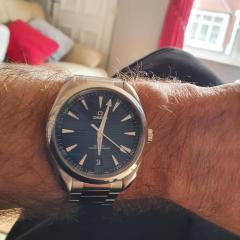How do you turn steel on a watchmakers lathe? It took me forever to reduce the diameter of a piece of steel.
-
Recently Browsing
- No registered users viewing this page.
-
Topics
-
Posts
-
By luiazazrambo · Posted
Meanwhile I learnt that you can buy disks with the correct outside diameter with the correct hole from aliexpress but they are a little bit thicker... I dont know what does the little bit thicker means from the practical point of view, like are they still usable or do you need to tweak something to make them work? -
By Neverenoughwatches · Posted
I know I missed out badly on the one I let drift, I'll find the thread I made about it.




Recommended Posts
Join the conversation
You can post now and register later. If you have an account, sign in now to post with your account.
Note: Your post will require moderator approval before it will be visible.